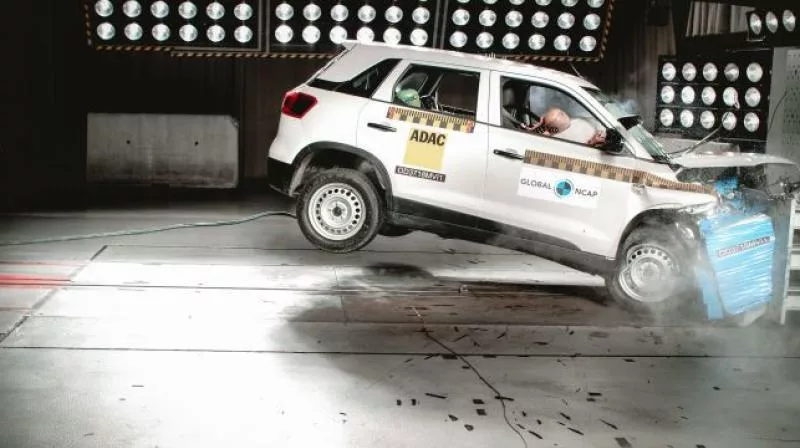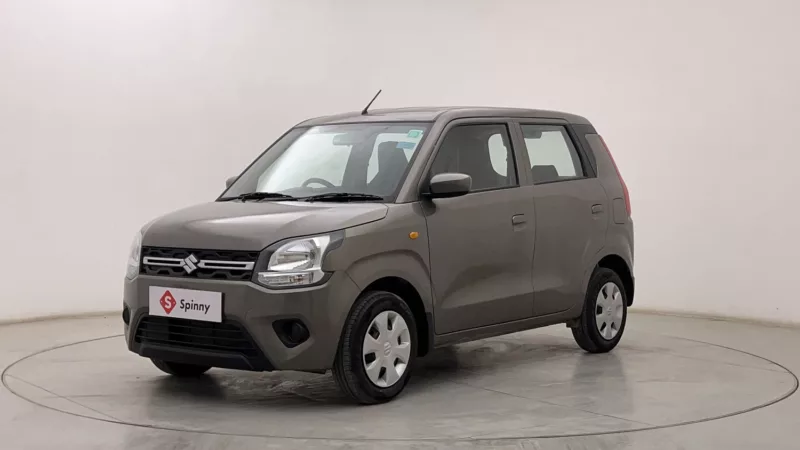The manual gearbox in our cars is an old friend. From our first driving lesson to our first car, the motion of changing gears and working the clutch becomes muscle memory over time.
There is, however, a rising trend towards automatic cars for their greater convenience and relatively lower learning curve. And many, including me, are looking at giving up our long-term relationship with manuals and flirting with a life without the clutch.
To experience this transition and give you a good idea of what you can expect, I made a brief shift from my manual Maruti Suzuki SX4 to an automatic Hyundai Creta. Here is how my first experience with an automatic car went, and what you should keep in mind when you drive an automatic car for the first time.
{count} Affordable Automatic Cars on Spinny
Getting Familiarised with a new Layout

With four years of manual driving muscle memory, stepping into an automatic car – a Hyundai Creta equipped with a torque converter automatic transmission in my case – felt familiar and alien at the same time. The most glaring change was the disappearance of the clutch pedal (which I was aware of) and the larger brake pedal (of which I had no prior idea).

While my feet were getting used to the footwell, my left hand had a new gear shifter to work with. The shifter was in a known place in a new layout. Gone was the friendly H-pattern shifter and in its place was a simpler, vertical aligned gear selector with ‘P’-‘R’-‘N’-‘D’-‘M+’-‘M-‘ marked on it. The shift-lock release button on the shifter was a surprise. This will be important when I start the car. For now, this is what the letters stand for:
- P: Park
- R: Reverse
- N: Neutral
- D: Drive
- M+: Manual Gear Up
- M-: Manual Gear Down
With my feet and hands now familiar with where the controls were, it was time to start the car. From my prior research, I knew that the brake had to be engaged as a mandatory step to be able to disengage the transmission from ‘P’. I did that by pressing the shift-lock release button and shifting into ‘R’ or ‘D’. The shifter itself effortlessly shifts into gear, which makes the shift-lock more of a life saver than it first appears as it prevents any accidental shifts into one of the movement gears. So far, so good.
What you should do
- Get used to just two pedals.
- Familiarize yourself with the layout and function of the gear selector
- Always keep your foot on the brake pedal before starting the car
- Use the shift-lock release button to move the gear selector from ‘P’ to ‘D’ or ‘R’
Start off on the Right Foot – Literally So
When slotted into a movement gear (D or R), an automatic car enters ‘creep’ mode and slowly moves ahead, taking away the need for pressing the clutch with your left foot.
As expected my automatic crept forward as soon as I put it in ‘D’ but did not respond to accelerator input from my right foot. A driver never admits his fault until proven wrong, so I immediately put this down to a faulty car. I soon realised I had instinctively used my left foot (also called ‘wrong foot braking’), treated the brake pedal like the clutch, and pressed the sensitive but resistant brake pedals to control the speed in creep mode. The brakes did what they were supposed to: they brought the car to a halt, and I may have got whiplash along with my bruised pride.
Humbled, and now enlightened about which leg should control the accelerator and brake pedals (the right one), I set off again. This time, creep mode slowly introduced motion to the car and it instantly responded to throttle input. My tiny existential crisis averted, I could now focus on the other aspects of driving an automatic car.
What you should do
- Only use your right foot and keep your instinct in check
- You only need to select ‘D’ mode once to move forward
- Get familiar with the sensitivity of the car’s brakes. Avoid embarrassing yourself in front of family and friends
- Drive the car at low speeds using the creep mode and the brakes rather than the accelerator
Smooth Transmission, Missing Drama
Coming from four years of exclusive manual driving, I found the automatic gearbox in the Creta smooth to the point of being unnoticeable.
In the normal drive mode, the gearbox prefers to shift quickly away from lower gears and get into the highest gear. For the most part, I kept the car in ‘D’ and let it handle the shifts. This was a pleasant experience, especially in traffic, where the creep mode had made operating a clutch obsolete to me.

For more enthusiastic driving, I felt the manual gearbox provides more feedback and theatre, which adds to the excitement of driving. Seeing a small patch of open road, I pressed the throttle and only received the sensation of acceleration. What I missed was the engagement of changing gears, with the gears smoothly upshifting and downshifting without me lifting a finger. Would this be different in a DCT-equipped car? Most probably. The loss of engagement will require some getting used to, especially for drivers like me who have never driven an automatic car in their life.
Things to remember
- Drive mode (D) is for all forward driving duties
- Manual (M) is best used on uphill climbs or for quick overtakes
- Be aware of your speed while driving as it is easy to build speed quickly
- There is no need to shift gears, so keep your left hand engaged on the steering wheel
Neutral, Park or Brakes?
Researching online, I came across a discussion where a debate had erupted on whether Park (P), Neutral (N) or just the brakes were enough to navigate traffic. From my drive, leaving the car in ‘D’ and applying the brakes felt the most natural for any quick stops I encountered. This would be similar to keeping a manual car in first gear but having the clutch and brakes engaged. At traffic light stops, it is better to engage ‘P’ mode while you are stationary. This will help you get into the habit of engaging ‘P’ whenever you are stationary while also prevent any accidental brake releases at traffic stops.
Things to remember
- Use Park (P) for all traffic light stops and longer stops
- Use Neutral (N) and brakes for extremely short stops
Let Go of the Brakes
Don’t use your left foot on the wide brake pedal
In my brief drive in an automatic car, I felt I relied a little too much on the brakes. Changing cars meant I was getting used to the sensitivity of the brakes on the Creta while also dealing with the creep mode speeds. I was constantly on the brakes when driving at low speeds to counteract the creep mode, mostly in anticipation that the car would accelerate to a higher speed. However, creep mode is designed to operate at a safe speed and using the brakes to control the speed is unnecessary, unless you are coming to a stop.
Things to remember
- Creep mode operates at a safe speed and does not require to be controlled
- Avoid engaging in wrong foot braking
Does the Driving Style need to change?
The short answer is: yes. In my brief time with the Creta AT, I had to control my instincts to keep the left hand and foot disengaged from the driving experience. This won’t be an immediate change for a manual driver like me. I felt at least a week of regular driving would be required to adopt the new habits of driving an automatic.
Another important point to keep in mind here is that your choice of transmission type will also influence how you drive the automatic car. A torque converter, CVT and AMT automatic are best suited for sedate drivers, where the gear shifts will be the least noticeable (more noticeable on AMTs). While I did not feel it, enthusiastic drivers will find value in a torque converter and a DCT automatic, which offer more feedback and engagement when required. In all other driving conditions, all automatic transmissions perform similar to each other.
Automatic Transmission Type | Pros | Cons |
Automated Manual Transmission (AMT) | Cheap to maintain | Noticeable gear shifts |
Continuous Variable Transmission (CVT) | Smoothest automatic gearbox | High maintenance costs |
Dual Clutch Transmission (DCT) | Instant gear shifts | Expensive |
Torque Converter AT | Smooth gear shifts | Cheap to maintain, expensive to replace |
What else should you keep in mind?
- Automatic cars are more expensive: It’s not just the extra money you shell out while buying them. Automatic cars have a reputation for being more expensive to maintain and this holds true even today. While general service costs are on par with manual cars, any damage or malfunction to the automatic gearbox will require a complete replacement rather than a cheaper fix to the specific part in the transmission.
- Automatic car mileage is (almost) at par with their manual counterparts: When automatic cars were first introduced, you would trade fuel economy for convenience. Today, automatic and manual transmission cars perform close to each other with almost negligible differences. However, do remember that your personal driving style will have a greater impact on the mileage rather than the transmission.
Final Thoughts
When transitioning to an automatic car, you will have to accept that a learning period will be required for you to become comfortable with the car. It could take anywhere from a few days to a few weeks before your instinct and muscle memory adapts to driving your automatic car. Be prepared to get used to the sensitivity of the brakes and rely more on the tools at your disposal to maintain the longevity of your automatic transmission.





 ne big family!
ne big family!
This is a very insightful article. It’s very useful and reliable.